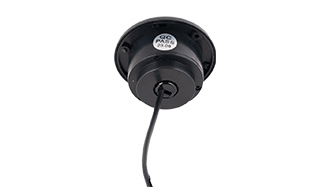
Date:2024-03-08 11:22:24
Vists:
Title:differences and features of US gauge sockets vs.other countries'sockets
Main article:
Different countries and regions have their own electrical standards and socket designs,which leads to differences in the types of sockets available in each place.This article will be for the United States of America's U.S.standard sockets and other countries socket comparison,to explore the differences between them and characteristics.
1.Socket types and standards
American sockets use the American National Standard(National Electrical Manufacturers Association,referred to as NEMA)developed specifications.They use different jack and socket designs,such as NEMA 1-15(two-pronged sockets),NEMA 5-15(three-pronged sockets)and NEMA 5-20(three-pronged sockets).Other countries and regions may use different standards,such as Schuko sockets in Europe and BS 1363 sockets in the UK.These socket standards are usually developed by the respective national or regional standards bodies to suit local power requirements and reliability standards.
2.Voltage and Frequency
The U.S.electrical system uses a voltage and frequency standard of 120V/60HZ.This means that U.S.-gauge outlets supply power at a lower voltage and higher frequency.In contrast,many other countries and regions use higher voltages(typically 220V or 230V)and lower frequencies(typically 50HZ).This difference in voltage and frequency requires the use of appropriate plug adapters and transformers when travelling internationally or using foreign appliances.

3.Plug types
Sockets and plugs in the United States are usually designed with either two parallel jacks or three parallel jacks.In contrast,Schuko plugs used in Europe have two cylindrical pins and a grounding pin.The BS 1363 plug used in the UK,on the other hand,has three rectangular pins,one of which is slightly longer and is used for grounding.These different plug designs can lead to inter-plugging problems between the different plug types and therefore require the use of adapters or converters.
4.Grounding Design
The NEMA 5-15 and NEMA 5-20 types of receptacles in the U.S.gauge receptacles have grounding pins to provide additional reliable ground coverage.In addition,the U.S.electrical system also makes extensive use of grounded wiring to ensure the reliable operation of electrical equipment.In contrast,some other countries and regions do not always have receptacles with grounding pins or use grounding wires,which may make a difference in the reliability of electrical equipment.
5.Reliability Standards and Certification
Each country and region has its own reliable ground standards and certification requirements for receptacles and electrical equipment.In the USA,for example,sockets and electrical equipment need to comply with the standards of the American National Standards Institute(ANSI)and the National Electrical Reliability Code(NEC).Other countries and regions also have their own reliability standards and certification bodies to ensure compliance and reliability of sockets and electrical equipment.
In summary,there are several notable differences between U.S.-gauge sockets and sockets from other countries.These include receptacle type and standard,voltage and frequency,plug type,grounding design,and reliability standards and certification requirements.It is important to understand these differences to ensure
